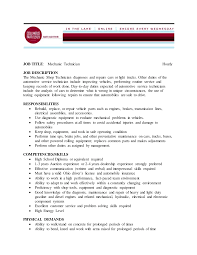
What does it cost to replace your tires? Prices for tires vary depending on where you live and what type you choose. To be able to compare apples-to-apples, they should be quoted "outside the door". Remember that TPMS kits can be an additional cost and could increase the price of new tires by a significant amount. There are ways you can save money on tires and installation.
Prices vary depending upon where they are located.
There are two pricing structures for tire shops. Prices for tires installation and replacement will vary depending upon the type of tire and where it is located. A local tire shop is typically less expensive than a chain. A national chain may be more expensive than a local independent shop, so it's best to research pricing in your area before making a decision. For example, Walmart's Tire & Lube Express stores often provide the lowest prices on tires and installation. However, they might sell you a higher-quality tire than what you'd normally purchase.

Comparison shopping is a great way to find the best price, regardless of whether you purchase your tires online or in a brick-and mortar tire shop. Walmart is the most affordable, but you will pay more for convenience and lower prices at other retailers. Costco is another great option, with great fuel prices. No matter where you live, compare prices to get the best deal.
Size of tire
While the size and cost of installing a tire can be costly, it is typically less than $70 per tire. The cost of the tire, its manufacturer and the location will all affect the price. Installation costs in New York City average $40. In less-populated areas, it will cost $15-20 per tire. You should compare prices to find the lowest price.
The price of tires and installation varies depending on size, brand, style, and installation, and the type of vehicle you drive. The cost of a set of four tires for a full-size pickup truck can run from $400 to $1800. An economy car can change a tire for $50. A set of four for large SUVs can cost up to $3,000.
Price for TPMS Kit
There are many reasons to have a tire pressure monitoring system installed. First of all, you need to know how much air pressure is in your tires. For your safety, it is vital to maintain proper air pressure. A proper tire pressure gauge is essential to your safety. This system alerts you when problems arise before they become more serious. You can avoid problems by knowing the correct pressure for your tires.

Installation and the cost of a TPMS sensor can be very expensive. An individual sensor can run over $100. But even with that high price tag, you could end up making a steady income by selling them to your customers. This means fewer headaches for you and more satisfied customers. There are several ways to price a TPMS kit and installation. Here are some examples. This article details the cost ranges for installation.
FAQ
Is it important which college I go?
You're wrong. There's no difference between colleges regarding getting into the automotive industry. There are some schools that offer more specific programs than others.
What qualifications are required to become a truck mechanic
You don't have formal qualifications for this role, but you are very experienced working on trucks and engines. You are a valuable asset as you can quickly diagnose and solve problems efficiently.
Additionally, you have a solid knowledge of diesel technology that will enable you to determine what parts are necessary to repair our vehicles.
What is the length of an automotive training course?
An automotive course lasts 3 years.
The first year is spent on theory, learning all about cars. The second year is dedicated to practical training, where you will learn how to fix cars, drive them, and do other jobs around the car. The last year of your training is spent on practical training, where you learn how to fix real-world problems.
What's the difference between a mechanic and an automotive technician?
These two jobs are very similar but not identical. The mechanic fixes cars while the technician maintains them.
A mechanic must be skilled in manual dexterity and able to complete simple tasks quickly. A mechanic must be able diagnose and fix problems quickly and accurately.
An automotive technician requires more technical skills than a mechanic. They must be capable of reading blueprints and using tools such as drills, wrenches, etc.
They should also be capable of safely performing complex procedures. They should also be familiarized with the different types of engines as well as electrical systems.
They must also be capable of understanding how parts interact.
This means that mechanics usually make less money than automotive technicians. Both careers have many options.
How can I fix my automobile as a hobby.
If you are interested in cars, why not take it on as a hobby? It is possible to learn about cars, repair them, purchase parts, or simply enjoy them. This would be a wonderful hobby if you're looking to find something completely different.
It's not an easy task to make this a full-time job. This requires dedication and hard work. Also, you will need to put a lot of money into it.
So unless you have a good reason for wanting to get involved with cars, then it might be best to leave it alone.
Do I need to have a degree to work as an automotive mechanic? What about part-time study?
Although a degree is not necessary, it can be helpful. Employers prefer candidates who have completed a full degree. It shows that you've worked hard and are determined to succeed.
You can still study while working, however. Some universities allow students the flexibility to finish coursework during summer vacations and resume their studies later in year. Students can also take classes part time throughout the academic year.
What are the requirements for an automobile technician?
You must have high school, or GED, and be able to read and write well in English and math. Also, you must be able read and write. The written test will be passed and you will then have to take several practical exams before you can begin work.
Statistics
- According to the BLS, total auto technician employment is expected to exceed 705,000 by 2030. (uti.edu)
- According to the BLS, the median annual salary for automotive service technicians and mechanics in the United States was $44,050 in May 2020. (uti.edu)
- There were 749,900 jobs available for automotive service technicians and mechanics in 2016, which is expected to grow by six percent through 2026. (jobhero.com)
External Links
How To
How to become an Automotive Technician
Automotive technicians provide repair and maintenance services to vehicles. He/she can be found at auto shops, garages and service centers. He/she works with customers to repair their cars and trucks, ATVs or snowmobiles. An automotive technician must have the ability to quickly diagnose and fix problems.
A person who wants to work as an automotive technician should first obtain an associate degree from a vocational school. After completing this program the student must pass the National Institute for Automotive Service Excellence exam (ASE). ASE stands for American Society of Mechanical Engineers. There are two parts to the ASE certification exam. One section tests mechanical knowledge; the second section tests practical skills. You must attend one of the authorized testing sites to take the test. You can find these locations online or through your local automobile dealer.
A candidate must pass the state exam after passing the test to become an automotive technician. It varies depending on the location of the applicant. Some states require applicants to take a training course while others allow them the freedom to study on their own. Some states issue licenses to technicians as soon as they get their license. Others wait until they have worked at least six months as an automotive technician.
An applicant should apply to a local auto shop in order to start their career as an automotive technician. New employees are usually apprentices when they first get hired. Apprenticeships last for three years. A student will learn to repair basic things like changing oil, adjusting brakes or replacing tires. They also learn how spark plugs are cleaned and inspect engine compartments. Some students will learn advanced repair techniques, such as changing shocks, installing air filters, and replacing engines. Schools offer classes during business hours. However, some schools offer evening classes if needed.
Once a student completes his/her apprenticeship, he/she becomes a journeyman. Journeymen spend typically four to five years learning to install major systems such as transmissions and differentials, steering gear, suspensions and drive shafts. You will also learn how to repair complicated electrical components, as well as how to remanufacture engines and rebuild transmissions. Because they have a good understanding of the job and what customers expect, many employers prefer to hire journeymen.
A candidate who passes all the necessary exams and gets a license might be interested in opening his/her own business. The Bureau of Labor Statistics estimates that there were nearly 1.7 million jobs available for automotive mechanics in 2010. That number was expected to grow by 18 percent from 2009 to 2020. When a candidate plans to open his/her own shop he/she should be ready to invest thousands of dollars in equipment.
There are many factors that affect the salary of an automotive technician, such as where they live, their education and experience. A jobless person can expect to make $20,000 per year. Someone with only a high school diploma could earn around $21,000 per year. Earnings for those with an associate's diploma are approximately $24,000/year. A technician with a bachelor's degree earned approximately $27,000 annually. The average annual salary for those with master's degrees was $32,000. A common trend is for salary increases to occur so a professional making less than $30,000 can reasonably expect to be earning $40,000 or more within a few years.